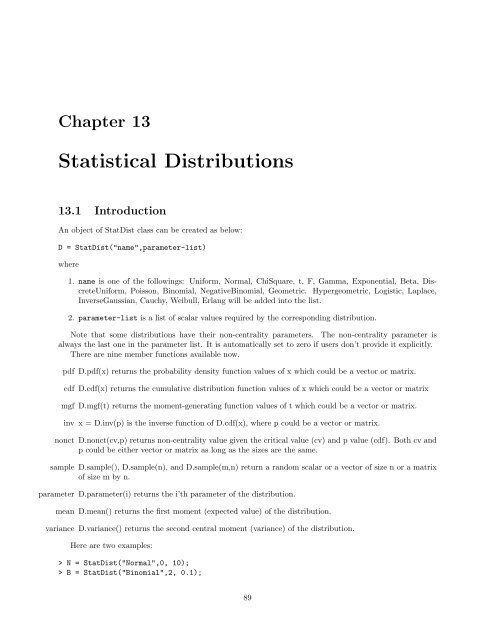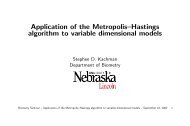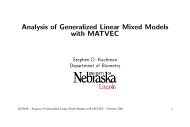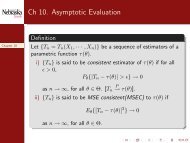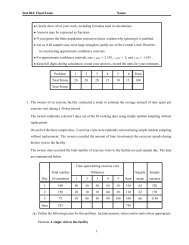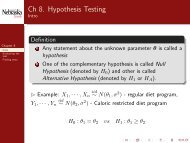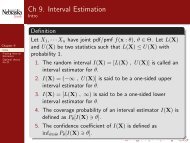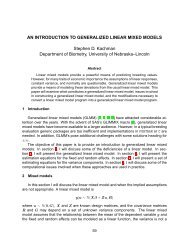Matvec Users’ Guide
Matvec Users' Guide
Matvec Users' Guide
- No tags were found...
You also want an ePaper? Increase the reach of your titles
YUMPU automatically turns print PDFs into web optimized ePapers that Google loves.
Chapter 13<br />
Statistical Distributions<br />
13.1 Introduction<br />
An object of StatDist class can be created as below:<br />
D = StatDist("name",parameter-list)<br />
where<br />
1. name is one of the followings: Uniform, Normal, ChiSquare, t, F, Gamma, Exponential, Beta, DiscreteUniform,<br />
Poisson, Binomial, NegativeBinomial, Geometric. Hypergeometric, Logistic, Laplace,<br />
InverseGaussian, Cauchy, Weibull, Erlang will be added into the list.<br />
2. parameter-list is a list of scalar values required by the corresponding distribution.<br />
Note that some distributions have their non-centrality parameters. The non-centrality parameter is<br />
always the last one in the parameter list. It is automatically set to zero if users don’t provide it explicitly.<br />
There are nine member functions available now.<br />
pdf D.pdf(x) returns the probability density function values of x which could be a vector or matrix.<br />
cdf D.cdf(x) returns the cumulative distribution function values of x which could be a vector or matrix<br />
mgf D.mgf(t) returns the moment-generating function values of t which could be a vector or matrix.<br />
inv x = D.inv(p) is the inverse function of D.cdf(x), where p could be a vector or matrix.<br />
nonct D.nonct(cv,p) returns non-centrality value given the critical value (cv) and p value (cdf). Both cv and<br />
p could be either vector or matrix as long as the sizes are the same.<br />
sample D.sample(), D.sample(n), and D.sample(m,n) return a random scalar or a vector of size n or a matrix<br />
of size m by n.<br />
parameter D.parameter(i) returns the i’th parameter of the distribution.<br />
mean D.mean() returns the first moment (expected value) of the distribution.<br />
variance D.variance() returns the second central moment (variance) of the distribution.<br />
Here are two examples:<br />
> N = StatDist("Normal",0, 10);<br />
> B = StatDist("Binomial",2, 0.1);<br />
89


